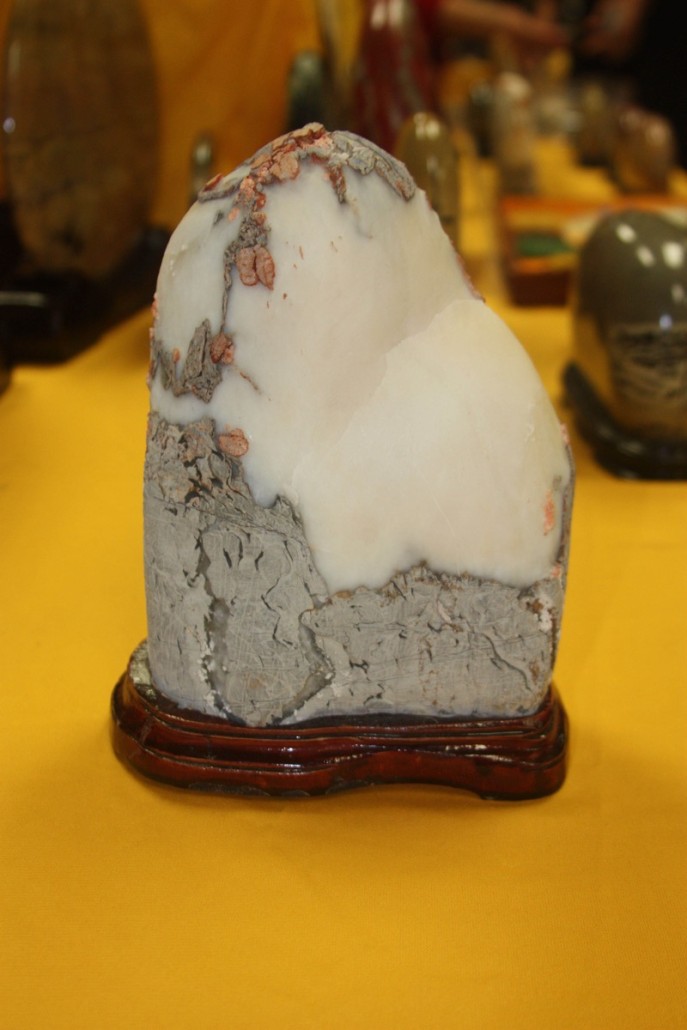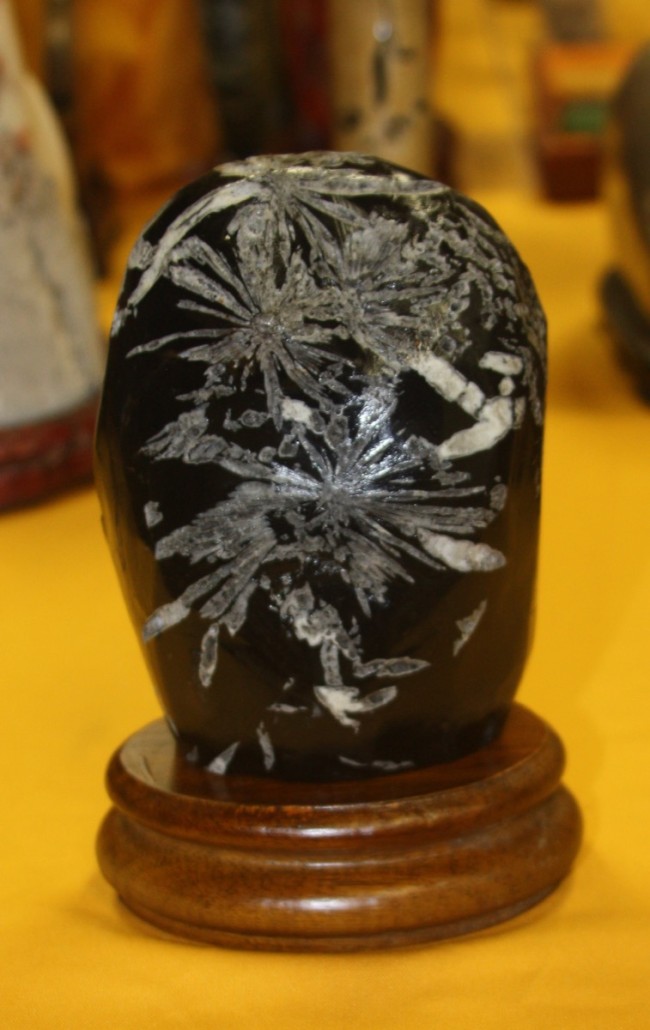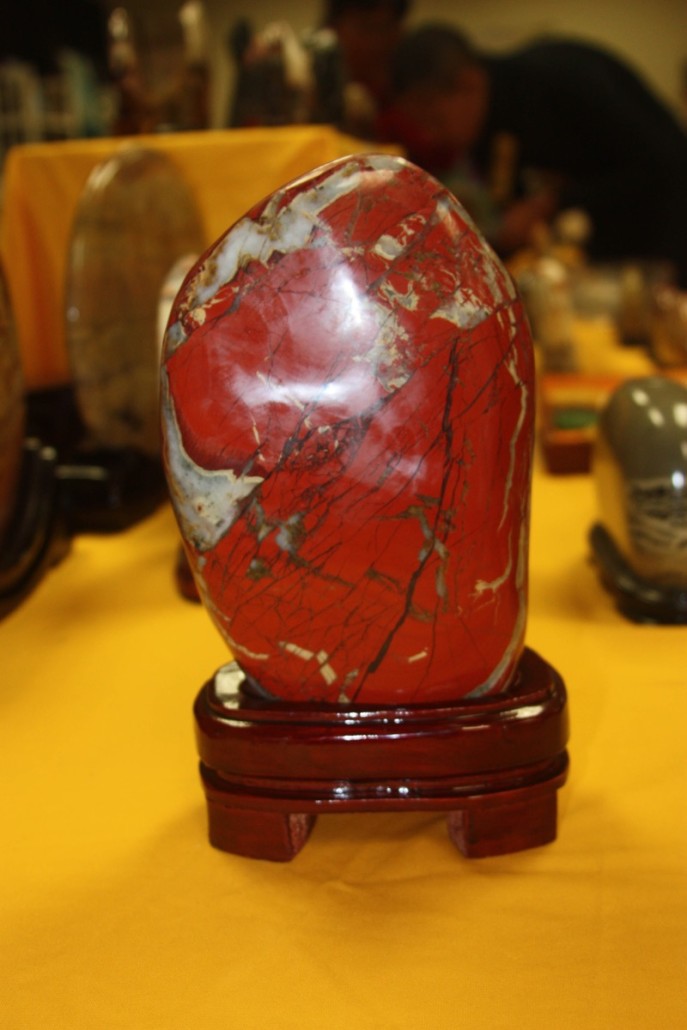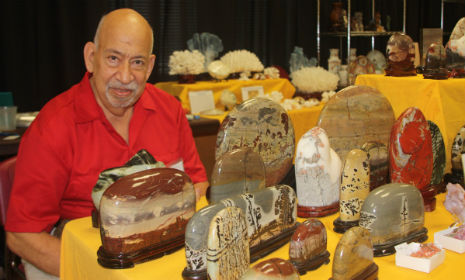
LONDON – Fate found us in Venice this week, looking at valuable stones. Except this was Venice, Florida, and the stones weren’t gems, they were … well lumps of rock. It was fascinating. We found an antiques fair and with the weather turning a little cooler than the 85-degree record-breakers of previous days, it was a blessed relief.
Inside, we met dealers Bob Janowsky and his wife, Juying, whose tables stood out from all the others in the main hall and three satellite rooms. He was selling “scholars’ stones” and while we’d heard of scholar’s rocks before, here were something similar that were both accessible and affordable.
In Chinese culture, the scholar was a member of an elite class of individuals, ranking alongside palace officials in the hierarchy. As such, he lived in relative luxury, in a house for himself and his family, surrounded by his books and writing equipment and works of art that were treasured possessions passed down from one generation to the next.

His courtyard and garden would be serene extensions to his home. Areas would be sent aside with landscaping and planting appropriate for solitude and quiet contemplation and it was there that from as early as the Han dynasty (206 B.C.-A.D. 220) that the scholar’s rock would be found.
These rocks, called “Gongshi,” were rare, towering pillars of stone, often many feet tall, and chosen for their unusual natural colors or shapes, their purpose simply to be admired and contemplated to promote consciousness and the viewer’s inner zen.
Smaller examples, ranging in size from a few inches to several feet, were collected to be placed in prominent positions inside the home, either on the floor or on shelves or ledges, while others joined the ink stones, brushes and brush washing pots on the scholar’s desk.
“Their purpose was to balance the natural elements in the room, Bob Janowsky told us. “They served as aids for contemplation and for meditation and for relaxation as you allowed your mind to wander through the imaginary world seen in these stones.
“Many of these old stones still exist today and they have been passed down from generation to generation as a family treasure.”
Such examples turn up occasionally in auction sales and antiques shops in the West, but they can cost many thousands of pounds, depending on their age and complexity of size and form.

Janowsky makes no secret of the fact that the scholar’s stones he is selling are “new antiques,” although he is quick to point out that their beauty was formed by natural processes many millions of years ago. What matters is being able to recognize their potential and worthy of being cut and polished.
He is helped in that task by his wife, whom he met on the Internet and married 13 years ago. A former New Yorker of Russian extraction, Janowsky now lives in Wellington, Florida. He started dealing in 1968, selling rare seashells, some worth as much as $25,000-$35,000.
He moved subsequently into publishing books about shells on behalf of various authors, but became interested in the stones when he visited his wife’s family who live in Liuzhou, a city near the Youshishan Mountain in the GuangXi autonomous region in South China. It is the only place where many of the particular stones he deals in are found.
“The stones are quarried outside the city and taken there to be cut and polished and sold in shops there. You see them in offices and restaurants, and we purchased several which we carried back you our home in the States in our suitcases – never again,” he said ruefully, referring to their weight.
Since then he has established links with the cutters and polishers, with Juying acting as translator, and now imports pieces and their tailor-made wooden bases directly. Prices are affordable, ranging from a few dollars for small, trinket-size samples to the mid-hundreds for the best and largest, which would be possible to take home in a suitcase.
“The area is called the Stone Capital of China,” Janowsky said “and there’s an area the size of several football fields set aside for the workshops that do the cutting and polishing. There are two prices, however, one for the Chinese and another, always higher, for everyone else, which is where Juying is an enormous help.”
Janowsky’s favorite stone is the White Lingbi, the so-called “white jade,” formed under intense heat and pressure millions of years ago, which is found only in the Dugu Mountain in Anhui Province.
The best are pure white, dotted with red spots, overlaid with what was once grey or black mud that has solidified to form a rough textured outer layer. In some examples it appears almost as folds over the white background. Erosion by wind and water over the centuries has caused this to be worn away by to expose the white inner core. The stones are among the most highly prized by connoisseurs and collectors.

The so-called chrysanthemum stone was among my favorites. Found in the Liuyang County in Hunan Province among other places, this stone is black but is infused with calcite which, when compressed during the earth’s formation, causes the creation of flower-like patterns in the solidified stone.
The chrysanthemum is the symbol of the Chinese Imperial family and represents wealth, honor, energy, good luck and longevity and is thus prized equally alongside the Lingbi stones among Chinese collectors.
In 1915, a chrysanthemum stone from Liuyang won the gold award at the International Fair in Panama resulting in them becoming universally popular.
Other stones in Janowsky’s collection included examples with thick mineral deposits and unusual color shadings, which in China are called “grass and flower stones” but he describes them as “landscape” or “painting stones,” while Youlan stones are granite, sometimes infused with limestone, which has been extruded and solidified in shapes that represent miniature rugged mountain ranges or castles.

“Followers of the ancient practice of feng shui, the Chinese philosophical system of harmonizing everyone with the surrounding environment, believe that these stones balance the harmony of the elements found in nature, which in turn affect very aspect of our lives,” Janowsky said.
We hope to return home feeling suitably relaxed and renewed, ready for a new year of collecting – stones and all.
Bob Janowsky can be contacted by email at mdmbooks@gmail.com.
___
By CHRISTOPHER PROUDLOVE



